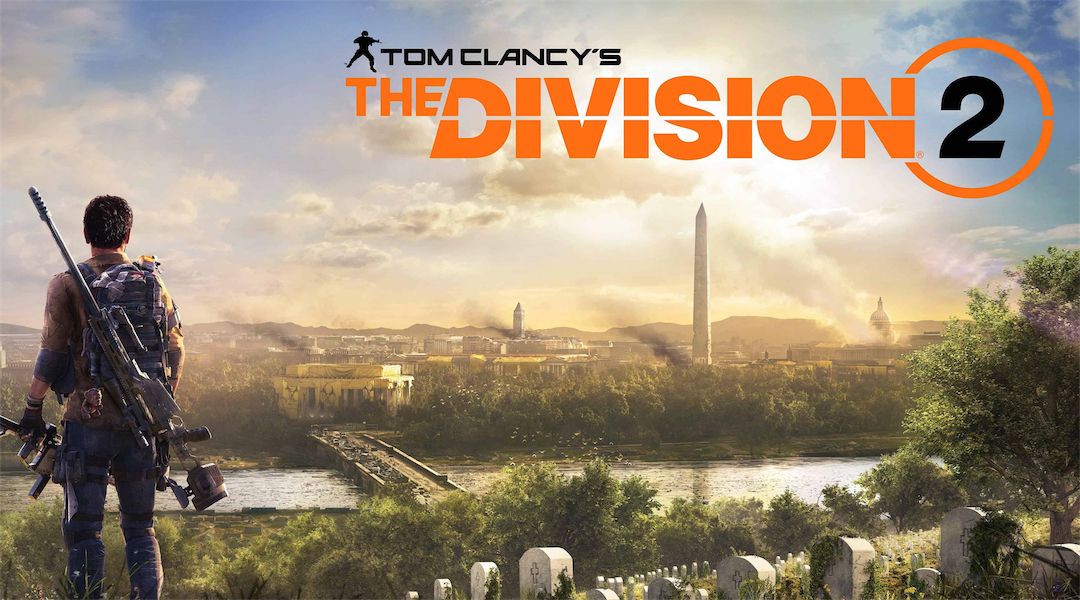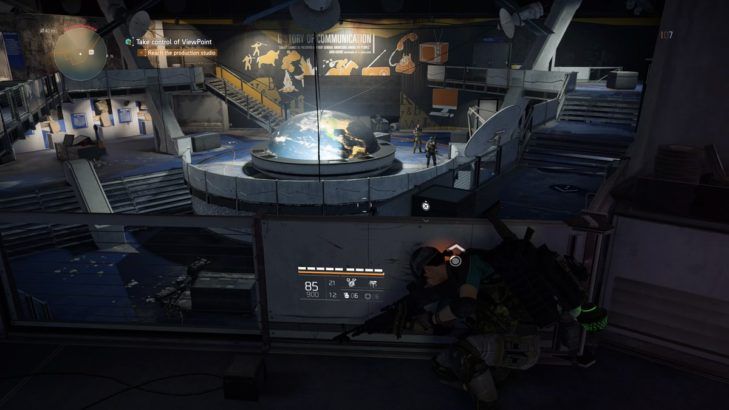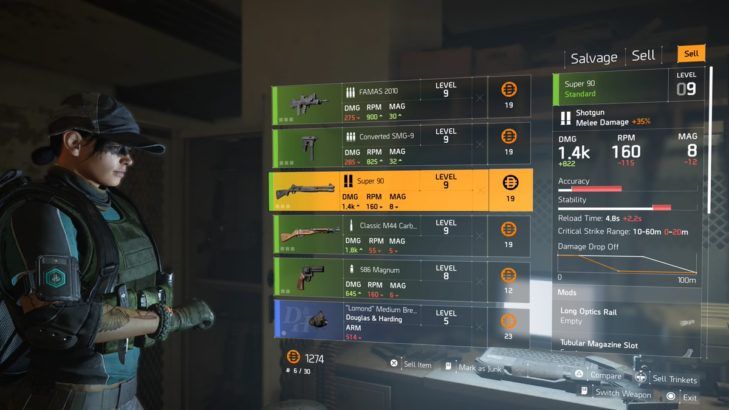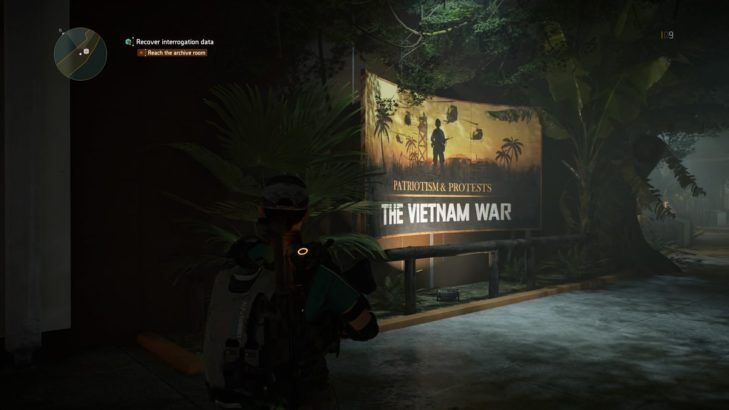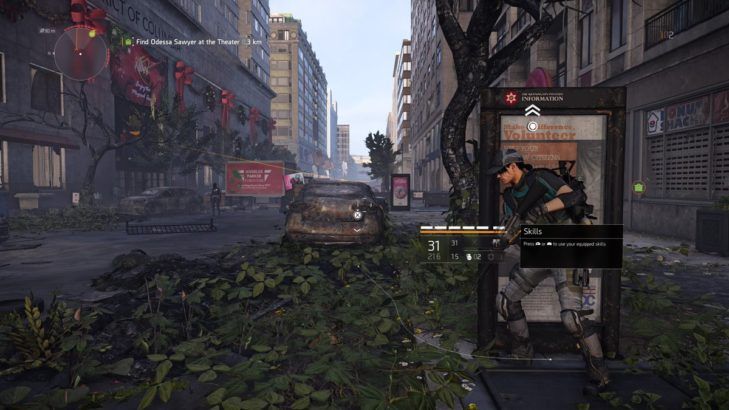Much like its predecessor, Tom Clancy's The Division 2 is about an American city rebuilding itself following an act of bioterrorism called the Green Poison outbreak. Instead of New York City, the sequel is set in Washington D.C. this time around, but players still assume the role of Agents for the Strategic Homeland Division. The overall goal is to assist emergency responders dubbed the Joint Task Force in restoring order and wiping out villainous bands of marauders and violent sects of power-hungry malcontents so as to provide a safe haven for survivors of the civil unrest caused by the deadly contagion. The theme of rebuilding and restoration doesn't purely apply to The Division 2's plot, though, for it's also clear that Ubisoft and Massive Entertainment have decided to critically assess the series' foundation by strengthening the core gameplay that worked well in the original title, by enhancing the importance and frequency of loot acquisition, and by creating a post-pandemic city rich with crisp details and with cleverly designed levels that each boast their own style and flair.
Just to get this out of the way, those looking for a compelling story within The Division 2 will not find it. More often than not, the game's key characters are forgettable, generic military types who spout a lot of staid argle-bargle during cutscenes and in mission dialogue, with their presence only fulfilling the bare minimum requirement of establishing a reason as to why players need to go shoot some bad guys and get some stronger guns and gear. Similar to the first game's story, and as found in myriad other loot-centric games, the sequel's plot is bland and is oftentimes meandering, essentially operating solely as a framework in which the gameplay can exist. That said, what The Division 2 lacks by not having an interesting and engaging narrative is more than made up for with its copious amount of playable content, its diverse sets of weaponry, gear, and Agent abilities, its tight mechanics, and its abundance of wonderfully crafted open world elements and unique set-pieces.
Once one dives into the world of The Division 2, they will quickly find that there is always something to do within its huge open world map. Be it completing main missions, finishing side quests, taking over Control Points, quelling public executions, tackling bounties, eliminating the threat of rival factions' Strongholds, and so much more, players are given lots of opportunities to collect countless items and engage in well-crafted PvE combat. Thankfully, the firefights attached to the aforementioned endeavors are usually pretty challenging no matter the difficulty's setting. This is due to the game's creators having ensured there's a good variety of enemy types that all have an astutely developed AI which forces players to constantly be on the move, switch between various points of cover, and alter their tactics in order to not get wiped out. Basically, taking enemies head-on is rarely an option for players who want to survive, whether they're going it alone or taking a co-op approach in a squad with friends. Of course, while its more palatable playing together in a group, the game is just as viable for those who want a strictly single-player experience.
Remaining firmly behind a specific spot during a given battle is usually not the best strategy, as various stages of a given level – and even during some one-shot encounters in the streets – have enemy squadrons equipped to shift the fight in their favor. For instance, one will often find themselves huddled behind cover and focusing on picking off different gun-wielding baddies, only to then be flanked by grenade-tossers, chemical-warfare fighters, or melee-types. And when a boss character with even more powerful equipment and stronger shields and health is thrown into the mix, it's imperative to make full use of the coverage provided by the environment, which is another example of Ubisoft and Massive Entertainment having ensured that The Division 2's PvE gameplay focuses on being dynamic, and avoids becoming stale.
Players looking for content with the potential for PvP combat, on the other hand, will be keen to give The Division 2's Dark Zone a go, as the development team has decided to split the PvPvE arena from the original game up into three separate districts for the sequel, with each being best suited for Agents in specific level ranges. Dark Zone East, for example, caters to those between Levels 10 and 19, while DZ South and DZ West are more for those in higher level brackets. Due to the fact that the game just recently released to the general public not too long ago, however, the Dark Zone may not be supremely gratifying just yet for those who are solely looking to scrap with other Agents, as PvP battles are currently infrequent due to many within the player base still going through the main campaign and leveling up their characters. Nevertheless, once more players become endgame-ready, the Dark Zone's player population numbers in The Division 2 should grow to a satisfying rate to sate the hunger for more PvP encounters. In order to supplement the game's PvP aspects and provide somewhat of a PvP stopgap for the time being, the developers have also included a couple of solid competitive versus modes under the banner of Conflicts, with 4v4 Skirmish and Domination modes offering good ways to mix it up with other players.
Not only are the enemy encounters and battles with other Agents appealing within their own rights, but also The Division 2 makes these experiences even more pleasurable by providing players with loot and XP at a frequency that feels both plentiful and meaningful. On many occasions, the game's loot drops will try and push one toward trying out different builds by offering up a gun type that has much better stats and isn't what a player may have been gravitating toward originally. Those who prefer more straightforward loadouts that include an assault rifle as a primary and a light-machine gun as a secondary, for instance, may feel more inclined to try out a new marksman rifle or a shotgun due to an elite enemy dropping an unfamiliar firearm type with better stats. Despite the fact that one may not be too acquainted with the way in which the new gun functions, the game goads one into giving it a go due to the weapon's superb stats being too hard to pass up. Fortunately enough, with The Division 2 divvying out lots of distinctive loot at a near-constant rate, and even allowing one to craft their own gear, the game doesn't actually force players into changing up what constitutes their favorite builds if they don't want to, and usually lets them stick with the types of guns they enjoy for the long haul.
Not to mention, higher rarity guns, as well as gear in the way of gloves, chest armor, kneepads, and the like actually have unique attributes and perks that make the process of seeking them out and equipping them during The Division 2 feel more valuable. For instance, a Superior-tiered backpack could have a perk that shortens the length of time a skill's cooldown lasts, making the object that much more helpful, while a rare gas mask could have a stat that gives a significant boost to critical shots. Of course, with all of this gear to collect and parse, players will frequently find themselves within game's menus. Navigating them may take a little getting used to at first since there is a lot of data to sift through, but doing so will eventually become second nature after a couple of hours with the game, as their layouts, labels, and symbols are intuitive for the most part.
What's more is that The Division 2's overall skill and upgrade system is extremely fulfilling, and definitely highlights how refined the game's RPG features can be. Leveling up lets players choose what kind of abilities they want their Agents to utilize without much hassle, whether it be focusing on assault by keeping tech like a Turret Gun in skill slot one or a Bombardier Drone in skill slot two, or being more tactical by putting a health Reviver Hive in the first slot and a Chem Launcher in the second slot. This can be done by spending accrued Skill Points and SHD Tech tokens instead of having to unlock various aspects of Medical, Tech, and Security Wings with dedicated points like in The Division 1. Ultimately, the way in which the sequel's new skill and upgrade system is designed caters more so to player choice by not boxing in an Agent to only be able to wield a specific set of abilities because of the way they had spent their points earlier on in the game.
On top of the many positives that The Division 2 has going for it already, the game's appearance is absolutely fabulous. Insofar as its visuals are concerned, the creators have put together a remarkably detailed world that includes beautiful moments of dynamic weather, unsettling environmental stories highlighting the creep of urban ruin and decay, as well as exceptional in-game renderings of actual locations from Washington D.C. A plethora of these real-life sites provide the backdrop for many of the title's top-notch instances of level design, with one noteworthy mission set within the American History Museum being a prime case in exemplifying how distinctive each of the quests can be in and of themselves. This is particularly true when one transitions from one area of the museum in this specific mission and into the dense, jungle-inspired set found within a room dedicated to the history of the Vietnam War. There are plenty more examples to be found in this domain, but it's best not to spoil them and let players discover them instead.
The Division 2 also contains fantastic presentation in its sound design, both in the soundtrack itself and in the noises that punctuate certain actions within the game, as the sounds from looting a highly coveted item or shots from firing any of the weapons are clean and clear, and perfectly suit the situation. When it comes to the score, the game's more action-packed moments contain compositions with chugging guitar, driving electronic drums, and moody synths that help set the tone and push one to focus and play their best during tense situations. In between the music heard during the chaotic firefights, The Division 2 even provides deceptively simple ambient arrangements that inspire one to explore, facilitating the discovery of various hidden secrets peppered throughout the game's sprawling map.
All in all, The Division 2 is great for what it is, and a vastly superior product when compared to the original, with the sequel having improved upon practically every feature found within The Division 1. While it doesn't exactly blaze adventurous new paths for the genre or deliver a glut of surprises, it nails what's most important in a loot-based shooter – it's fun and motivates players to come back for more. So, with such a wealth of excellent content to be found within the base game, one can only hope that Ubisoft and Massive Entertainment manage to bring about even more enjoyable materials via the game's free Year One post-launch DLC.
Tom Clancy's The Division 2 is available now for PC, PlayStation 4, and Xbox One. Game Rant was provided with a PS4 code for the purposes of this review.

